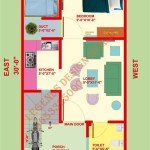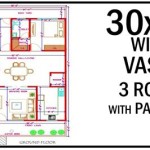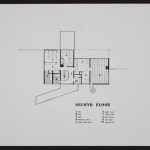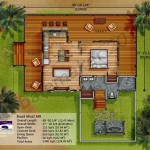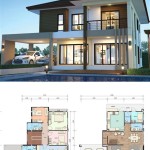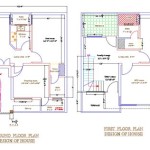Creating a Functional and Aesthetic Floor Plan for Your House
Designing the floor plan for your house is a crucial step in the construction process that can significantly impact the functionality, livability, and overall aesthetic of your home. A well-planned floor plan optimizes space, ensures smooth traffic flow, and creates a cohesive living environment.
Here are the essential aspects to consider when creating a floor plan for your house:
Room Layout and Function
Determine the number and function of rooms your house will require. Consider the size of your family, lifestyle, and future needs. Plan the layout of these rooms to create a logical flow. For example, the living room should be easily accessible from the entrance, while bedrooms should be located in quieter areas. Avoid creating dead-end hallways or rooms that are too small or too large.
Traffic Flow
Ensure that the floor plan allows for smooth traffic flow throughout the house. Main pathways should be wide enough for comfortable movement, and transitions between rooms should be seamless. Avoid creating bottlenecks or areas of congestion. Consider the direction of natural light and how it affects the movement through the house.
Space Allocation
Allocate space wisely to create a balanced and comfortable living environment. Consider the size of furniture and appliances when determining the dimensions of rooms. Ensure that each room has adequate natural light and ventilation. Avoid overpacking rooms with too much furniture or clutter, as it can make them feel cramped and uncomfortable.
Open or Closed Concept
Decide whether you prefer an open or closed concept floor plan. Open concept plans create a more spacious and airy atmosphere by minimizing walls and barriers between common areas such as the living room, dining room, and kitchen. Closed concept plans offer more privacy and seclusion by using walls to separate rooms.
Functionality and Aesthetics
Find a balance between functionality and aesthetics. While it's important to create a floor plan that meets your practical needs, you should also consider the overall aesthetic of the house. The layout, flow, and finishes should complement the architectural style and create a cohesive and visually appealing living space.
Future Considerations
Take into account future needs and potential changes. Consider the possibility of expanding or modifying the house in the future. Plan for extra space or adaptable rooms that can be repurposed as needed. For example, a guest room could double as an office or a study.
Professional Assistance
If you need guidance or assistance in creating a floor plan for your house, don't hesitate to seek professional help from an architect or interior designer. They can provide invaluable expertise and help you design a floor plan that meets your specific requirements and maximizes the potential of your space.

House Plans How To Design Your Home Plan

House Plans How To Design Your Home Plan

Small House Plan Ideas For Diffe Area To See More Read It Floor Plans Kitchen

Floor Plans Types Symbols Examples

Top Tips For Choosing A Floor Plan Your New Home

Simple 2 Y House Design With Floor Plan 32 X40 4 Bed Plans

Living Options Webster House

Peach Tree House Plan Ranch Floor Designs

The Basic Floor Plan Of A Modern Dwelling Scientific Diagram

What Is Used To Draw House Plans Cedreo

